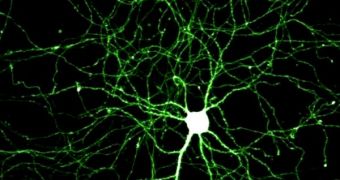The human body has evolved over millions of years to the point where it can make the best out of itself, during the healing process. As a person is recovering from an accident or an injury, such as a broken arm, its pain system becomes hyper-sensitized. This essentially means that even simple and normal actions, as walking, for example, or running the fingers over the skin, become painful. From an evolutionary standpoint, this makes perfect sense, as the affected tissues need to recover. But, in some cases, the pain outlives its purpose and becomes chronic, Nature News reports.
In a new set of investigations, University of California in San Francisco (UCSF) neuroscientists Robert Edwards and Allan Basbaum discovered that a small subset of nerve fibers might be in charge of routing the light touch sensations – that are usually painless – to the pain pathway, after an injury. These fibers were discovered decades ago, but their function has remained a mystery ever since, the experts say. “Surprise would be an understatement. No one knew anything about what these fibers were doing,” Basbaum says of the discovery.
Further details on the new study appear in a paper published in the latest issue of the respected scientific journal Nature, the team says. Unlike classic pain fibers, the scientists add, the newly found fibers, dubbed unmyelinated low-threshold mechanoreceptors (C-LTMR), only require minute stimuli to trigger a response. Average pain fibers need to reach a certain threshold first, before triggering a pain sensation in the dedicated neural pathways. The investigators also determined in their mouse experiments that the rodents became a lot more sensitive to pain than to temperature, further confirming the hypothesized role of C-LTMR.
“We knew these fibers existed, but their function was not at all clear until now. The data show that recruitment of these fibers is a new way of producing mechanical hypersensitivity. It's an exciting example of the specific functions of different sets of sensory neurons,” Clifford Woolf says of the finds. He is a neuroscientist at the Boston, Massachusetts-based Harvard Medical School (HMS). The new study also provides scientists with a new avenue of research in discovering treatments that may soothe pain sensations in diseases such as arthritis.

 14 DAY TRIAL //
14 DAY TRIAL //